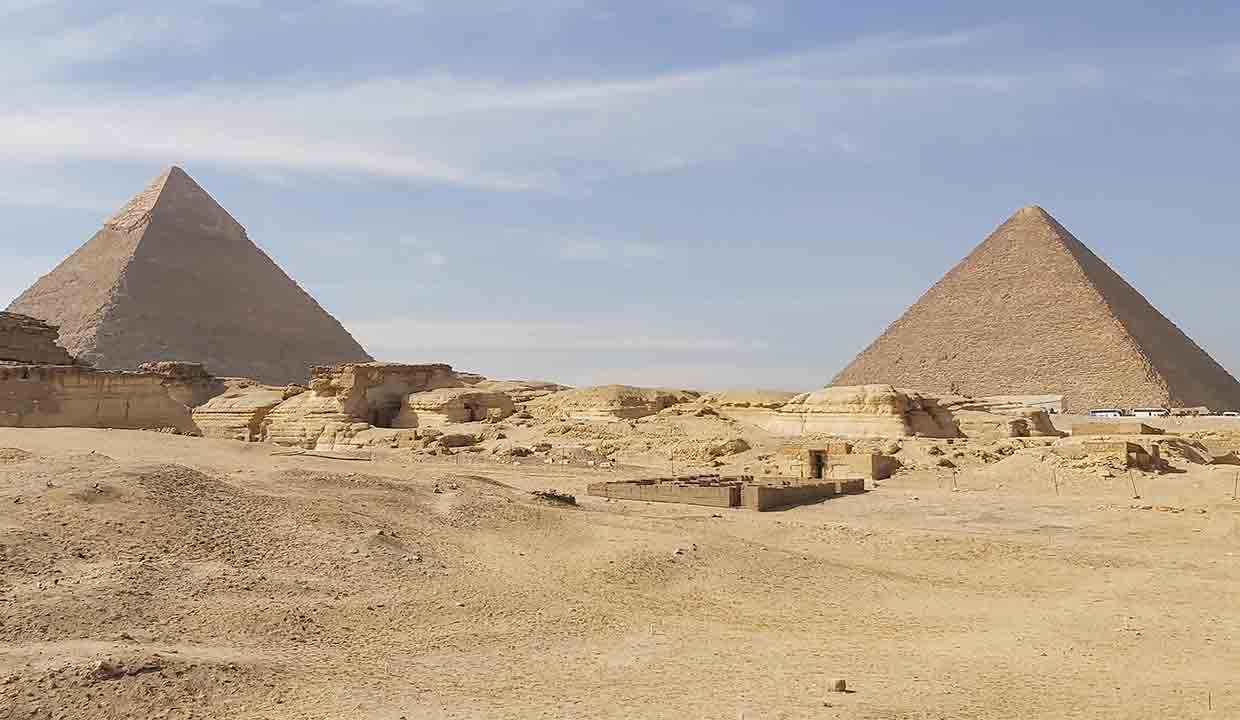Tombs of royalty and nobility beckon with their ancient allure. Step into a world of hieroglyphs, art, and rituals, revealing Old Kingdom’s heart.
When we think of ancient Egypt, the iconic pyramids often eclipse the vast and equally significant cemeteries surrounding them. These burial grounds, home to the remains of royalty, nobility, and high-ranking officials, offer a rich tapestry of tales, art, and beliefs that shaped the Old Kingdom.
The Royal Necropolis:
Situated close to the pyramids, the primary burial sites of the pharaohs, one can find the resting places of their royal family members. These graves, often less grand but equally intricate, tell stories of princes, princesses, queens, and sometimes even royal consorts. Although not monumental like the pyramids, they held immense significance as they housed the remains of those closest to the divine rulers of Egypt.
Mastabas: The Noble Tombs:
Mastabas, which can be literally translated to “bench” in Arabic, are the flat-roofed, rectangular structures that dominated Egyptian cemeteries before the advent of pyramids. Built primarily of mud-brick or stone, they had a distinct structure with a deep burial shaft leading to the underground chambers.
The external façade of mastabas was often austere, but the interiors were a different story. Walls adorned with vibrant frescoes and detailed carvings showcased scenes from the deceased’s life, various deities, and rituals meant to guide the soul to the afterlife. It was here, in these intricately decorated chambers, that one could get a true sense of the individual’s life and status.
Hieroglyphs: The Words of the Gods:
One of the most outstanding features of these tombs is the extensive use of hieroglyphs. This ancient script, believed to be the words of the gods by the Egyptians, was crucial for ensuring safe passage into the afterlife. Each symbol, meticulously carved, conveyed prayers, spells, and hymns from sacred texts like the Pyramid Texts and the Coffin Texts. They offered a window into the religious beliefs and practices of the time, highlighting the importance of the afterlife and the gods’ role in it.
Artistry in the Afterlife:
The Old Kingdom Egyptians believed that life didn’t end with death but merely transitioned into another phase. This belief gave birth to stunning artworks that graced the tombs. From detailed wall paintings illustrating daily life, festivals, and sacred rituals to beautifully crafted statues and stelae (stone or wooden slabs), the tombs were a celebration of both the mundane and the divine.
The artwork also provides anthropologists and historians with an unparalleled insight into societal hierarchies, professions, and daily routines. The details, from the attire worn by individuals to the food they consumed, paint a vivid picture of life during the Old Kingdom era.
Conclusion:
The cemeteries surrounding the pyramids are not just mere burial grounds; they are museums preserving millennia-old tales, beliefs, and art. The tombs of royalty and nobility, with their mastabas, hieroglyphs, and stunning artworks, serve as silent storytellers. They beckon us to pause and listen, to journey back in time, and to immerse ourselves in the fascinating world of the Old Kingdom Egyptians. As we walk amongst these ancient tombs, we’re reminded that in death, just as in life, the desire to be remembered, celebrated, and revered remains universal.
